How to Xeriscape
The 7 Principles of Xeriscape
1) PLANNING & DESIGN
To begin, think about how you would like to use your property and what features it could have. For example, would you like a patio, a big shade tree, a butterfly garden, or a vegetable garden? Where do you need pathways? How much sun is there in different areas? Are there views you want to frame or things you want to hide?
Next, you can make a scale drawing of your property, house and any plants or features that you want to keep. Then try out your ideas using overlays of tracing paper. This will help you envision your finished garden and accurately locate the features you desire, as well as plan the sequence of work.
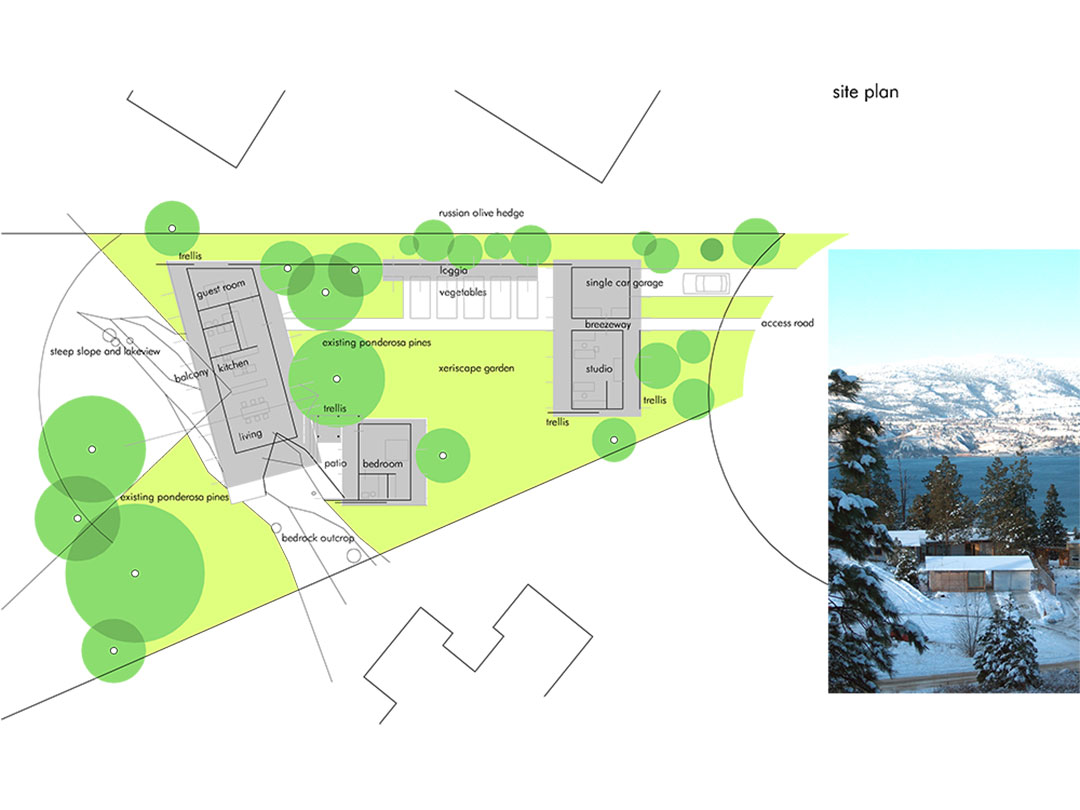
2) SOIL PREPARATION
Whether you have sandy soil or clay soil, the addition of organic matter such as compost and manure will help your plants to thrive. Organic matter increases moisture retention and feeds your plants naturally.
Spending time and money to create good soil in your garden will ensure healthy plants and save you time and money by greatly reducing maintenance, plant replacement, and water use.
Check out Our Blog articles for more information on– Soils of the Okanagan
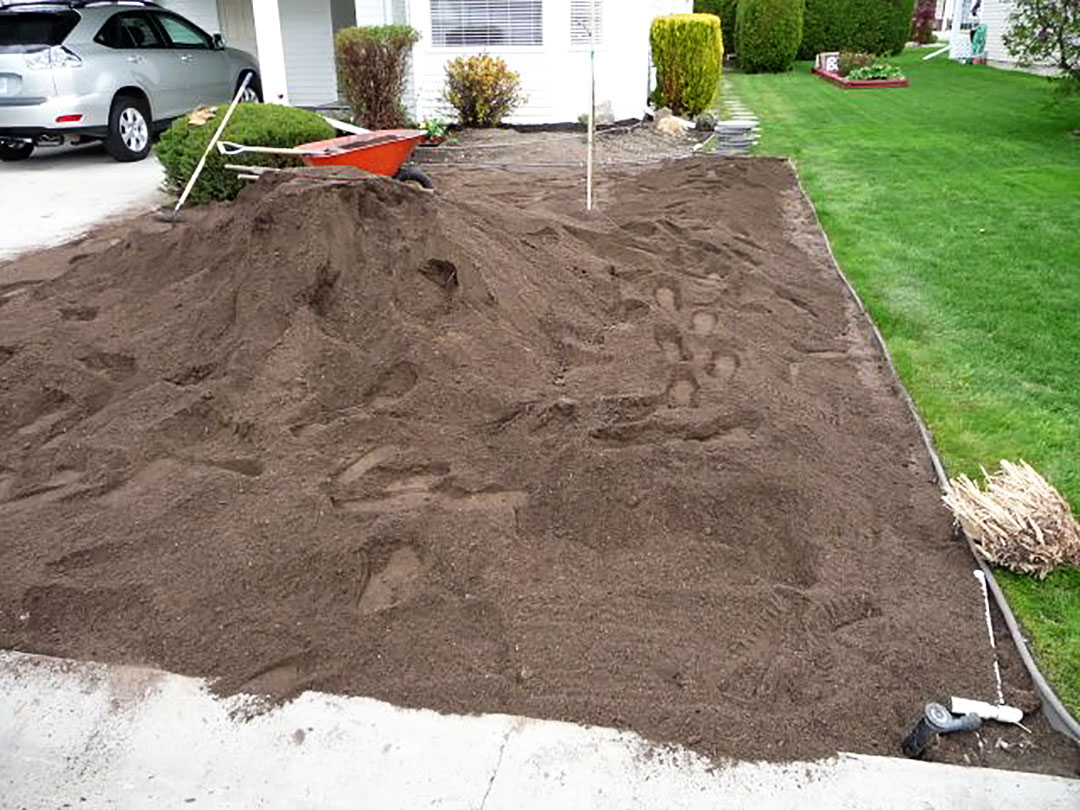
3) PRACTICAL TURF AREAS
Traditional turf grass, as it is commonly maintained, is the most labour-intensive, water-thirsty, chemically-addicted landscaping. Have only as much lawn as you need for activities such as children’s play areas.
Lawn grows best in at least six inches of good soil, with lots of organic matter and good drainage, in a flat location in the sun and away from tree root competition.
Choose a turf grass mix that is suited to the climate. In hard to mow areas, such as slopes, plant low-maintenance, drought-tolerant ground covers instead of lawn.
Check out Our Blog articles for more information on– Lawn Alternatives | Replacing a Lawn
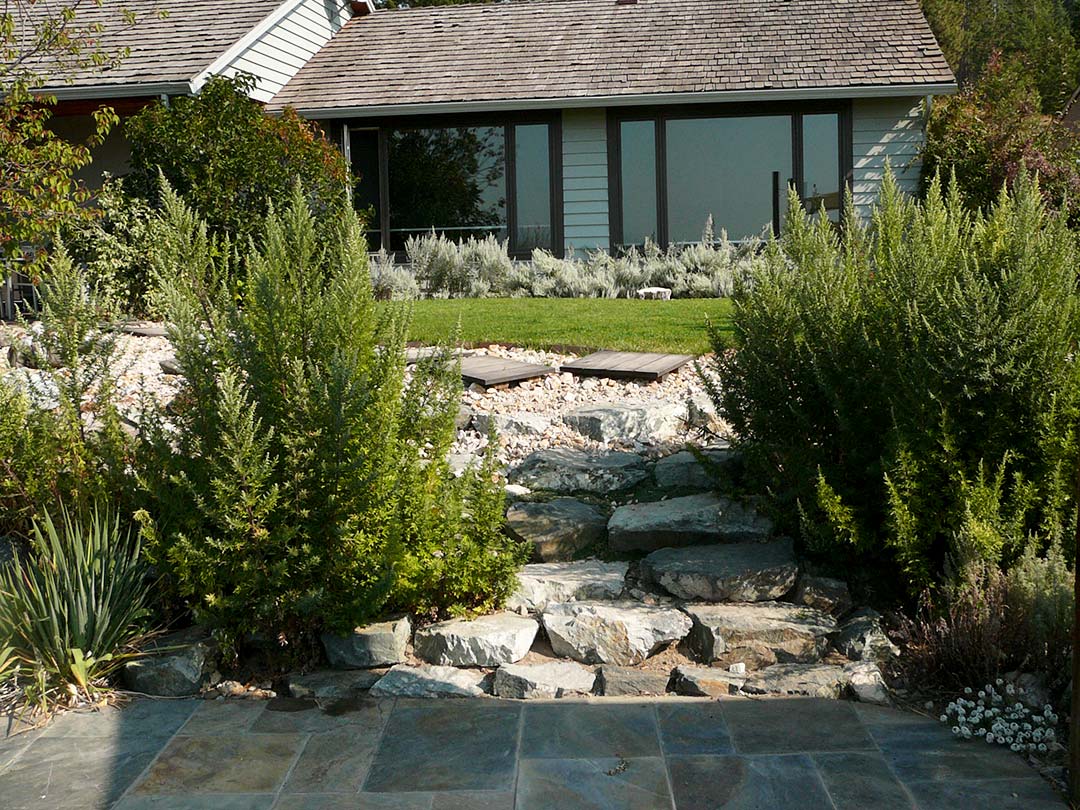
4) EFFICIENT IRRIGATION
Group plants with similar watering needs in the same irrigation zone. Shaded areas need less water than sunny ones, so they need to be on different zones.
For plants that must have supplemental moisture, water deeply (one inch per watering is recommended) and less often so the water soaks down, causing plant roots to grow deeper where they will be less vulnerable to drought. Be sparing with water in the spring so plants are encouraged to grow longer roots.
In the driest weeks of the summer, one inch of water per week is sufficient for a healthy, mulched vegetable bed or lawn. To find out how long to run your sprinklers, measure the time it takes to fill the one inch depth of tuna cans as you water in each zone.
Drip irrigation is the most efficient use of water. Maintain automatic systems, and ADJUST THEM REGULARLY to compensate for seasonal changes and weather. Do not water in the heat of the day.
Make Water Work has an excellent PDF guide with tips on how to Make Water Work Smarter in Your Yard.
Check out Our Blog articles for more information on– Drip Irrigation Maintenance | Sprinkler Distribution
Check out our Planting Guidelines page for planting instructions and maintenance guidelines.
5) APPROPRIATE PLANT SELECTION
Each variety of plant has growing requirements for light, moisture and soil that need to be met for it to thrive. To find water-wise plants suited to your garden’s conditions search our Plant Database.
All plants will need watering until they are established. However, if you cannot water, choose plants that are extremely drought-tolerant and plant them in the fall so they can get their roots established before the next summer’s drought.
Creating diversity by using a large variety of plants, will invite beneficial birds and insects into your garden, thereby dramatically reducing pests problems.
Make Water Works has also put together a Plant Collection PDF with great recommendations for drought-tolerant perennials, shrubs, grasses, and trees.
Check out Our Blog articles for more information on– Xeriscape Plants | Native Plants | Plant Care | Landscaping
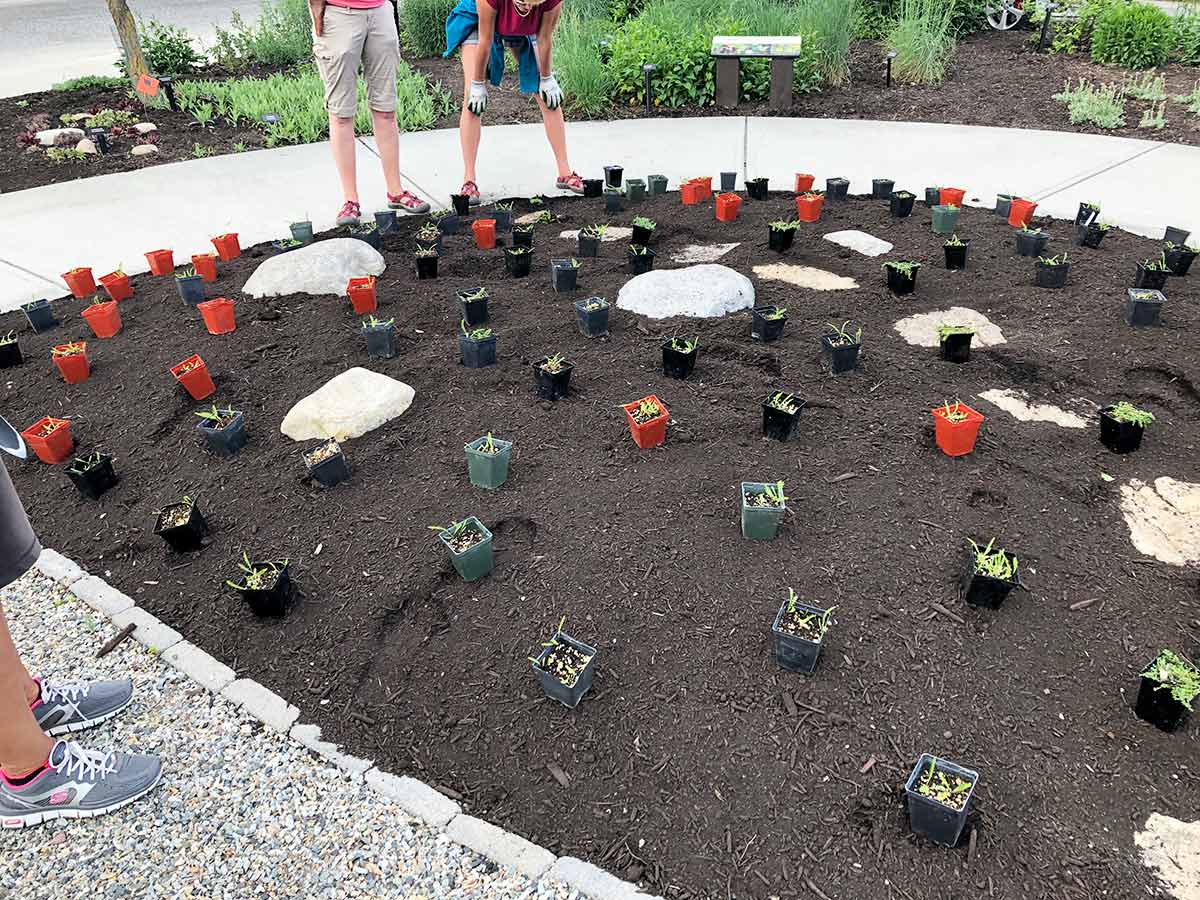
6) MULCHING
Mulch is like a protective blanket over the soil. It will conserve soil moisture, reduce weed growth, prevent a hard crust from forming on the soil surface, and protect plant roots and the soil from extreme cold and heat. This vital component of xeriscape gardening can be used in any existing landscape. Be sure to weed and water thoroughly before mulching.
Organic mulches such as compost and well-rotted manure also build up the soil and feed plants making chemical fertilizers unnecessary.
Rock mulches intensify heat around plants and your home. They make it difficult to weed and clean up fallen plant debris. Weed seeds will grow in the dust that accumulates under the rocks on top of landscape fabric.
Check out Our Blog articles for more information on– Okanagan Mulches | Living Mulch | Mulch Flammability
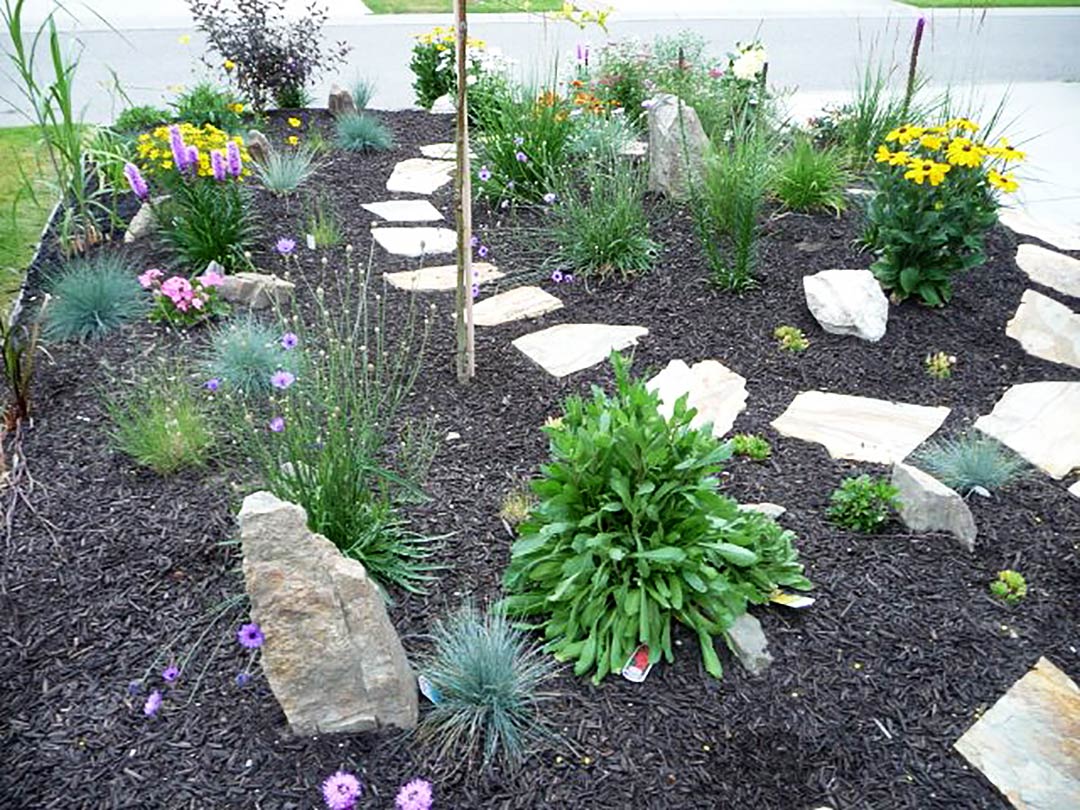
7) MAINTENANCE
As with any garden, it is very important to maintain your xeriscape garden, and the tasks are similar. However time and costs will be much reduced compared to conventional landscape maintenance. Here are the common maintenance tasks:
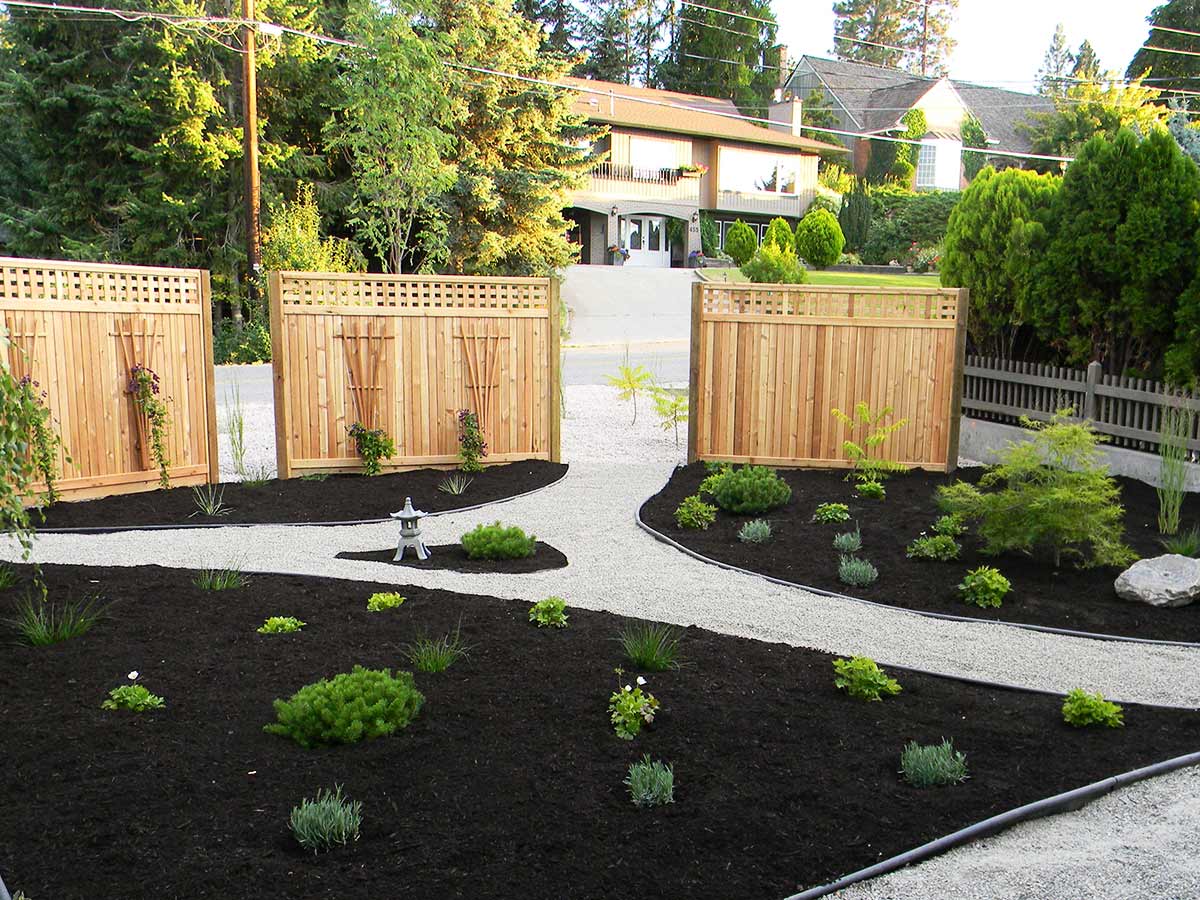
WEEDING
Check out Our Blog articles for more information on– Noxious Weeds | Invasive Plants
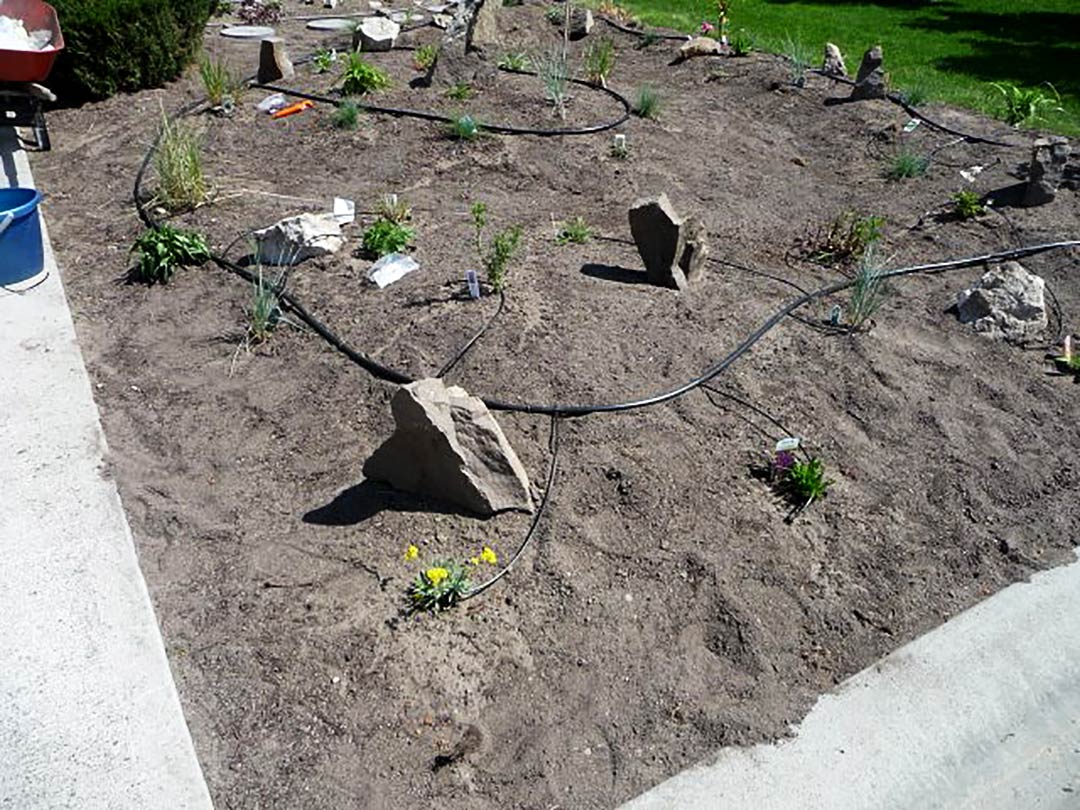
WATERING
By selecting plants that are suited to the dry climate, mulching all exposed soil, and grouping plants by water needs, watering will be drastically reduced. Over-watering weakens/stresses plants which makes them attractive to pests and diseases, generally creating more work. Adjust automatic water systems with changes in weather and watch for leaks.
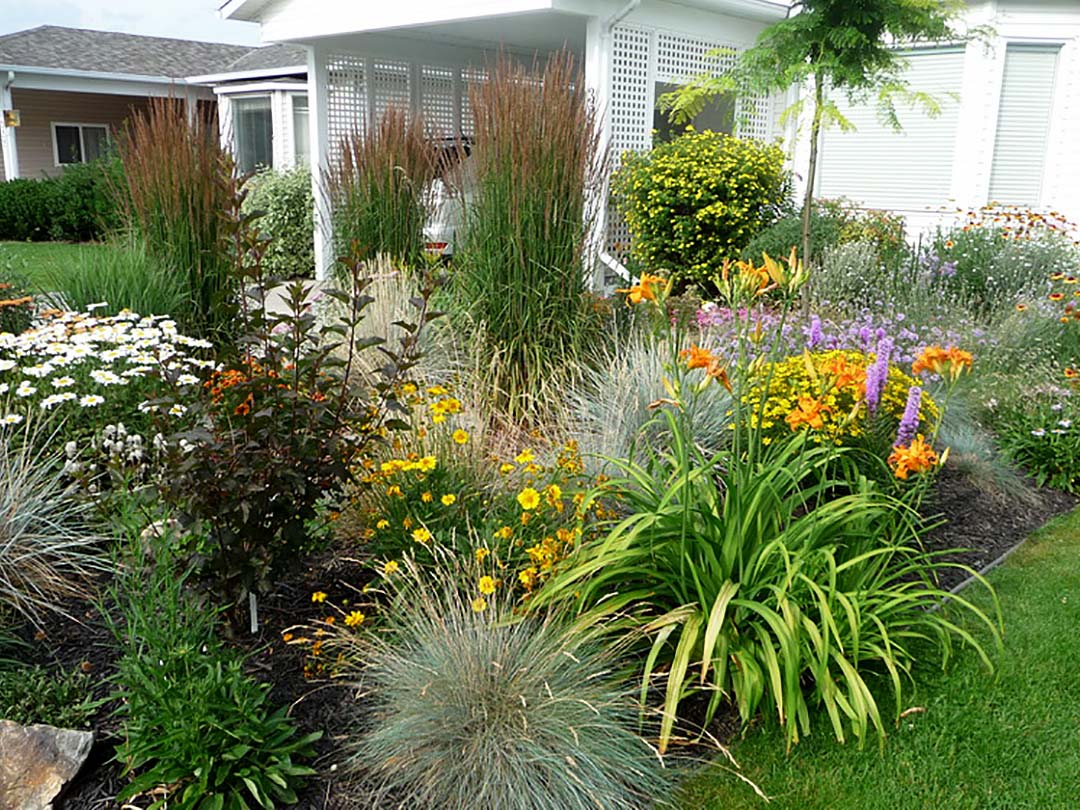
MOWING
If you still have a lawn but have minimized its size, mulched it, refrained from using chemicals on it, watered it less often for longer so it has a deep root system, and used appropriate turf grass species, it will require much less mowing and care.
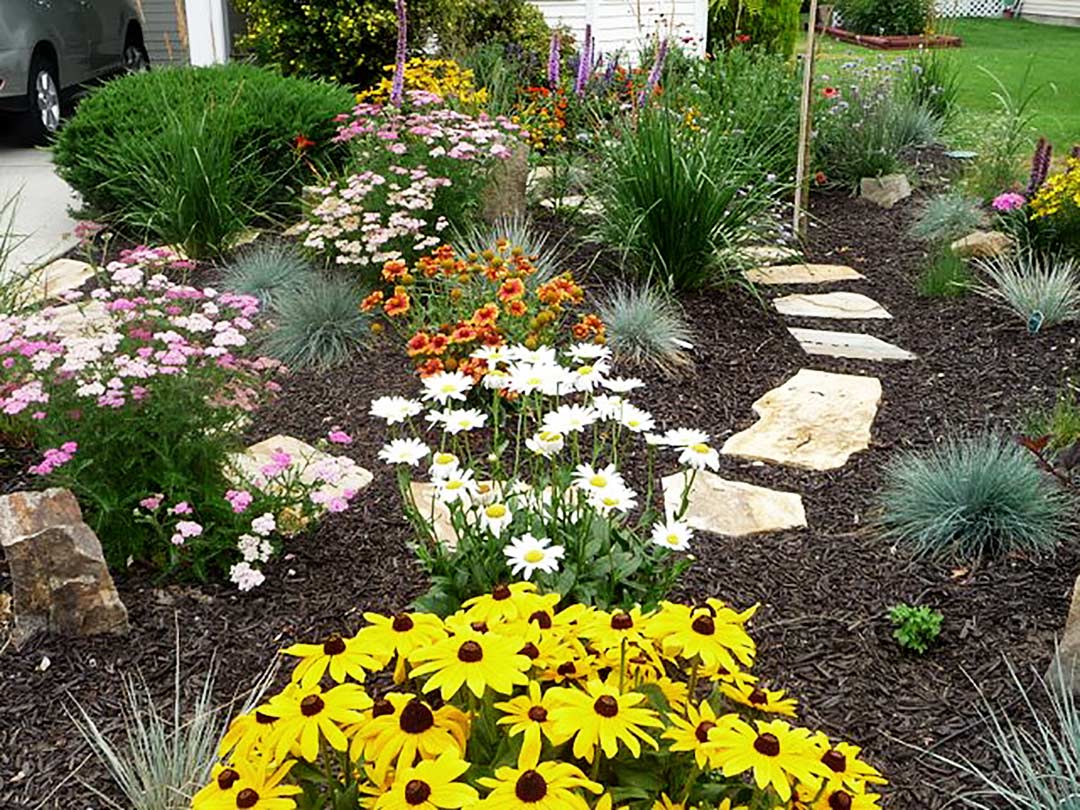
FERTILIZING
Organic mulches will slowly feed your plants so their growth will be healthy and sturdy, eliminating the need for chemical fertilizers. Chemical fertilizers tend to cause rapid weak growth, which attracts insects and leads to more maintenance chores such as staking and pruning. Organic mulches will also improve your soil.
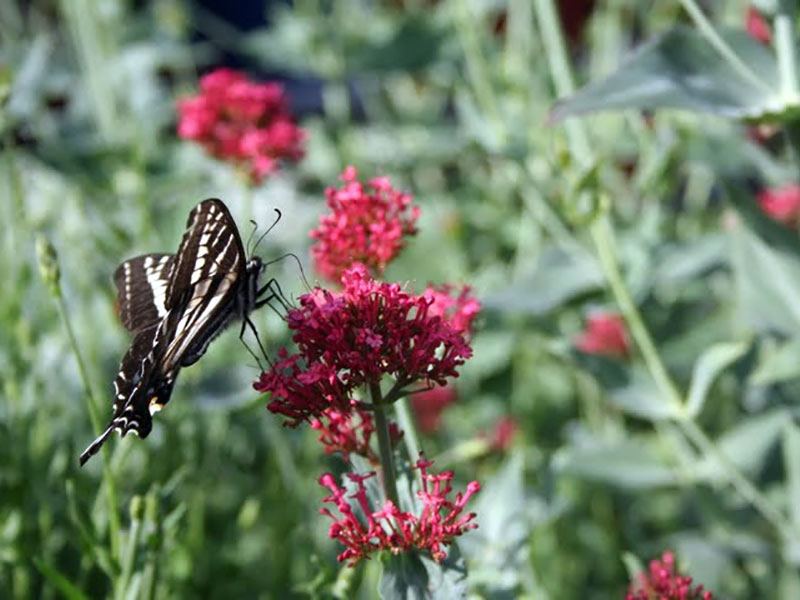
PEST CONTROL
Unhealthy plants are the ones most likely to attract pests. In a xeriscape garden plants are healthy because they are growing in their desired conditions and are not being over-watered or over-fertilized. Pest problems are minimal. Nature can usually take care of them. A garden that has a lot of diversity in the plant material will attract many beneficial insects, creating a natural balance. If you must deal with a pest control issue, use manual or organic methods so that good/predator insects are not killed off.
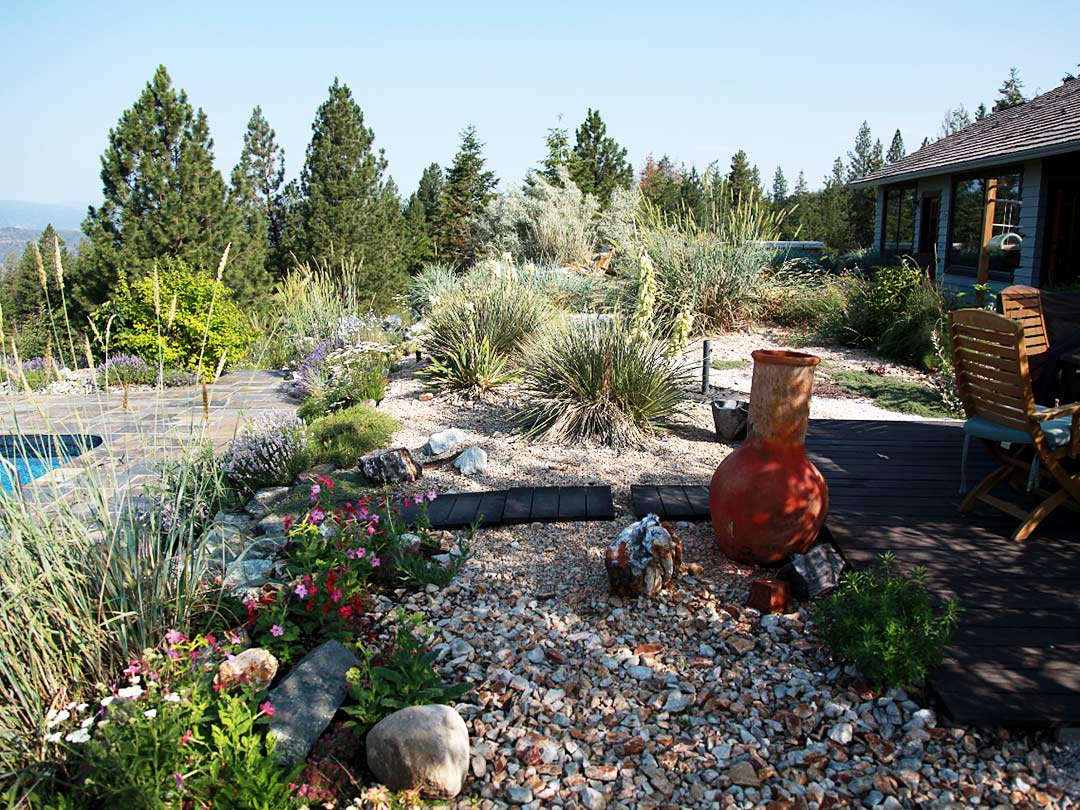
PRUNING
Check out Our Blog articles for more information on– Pruning
Make sure to check out Our Blog for great articles on Yard Care and Plant Care
